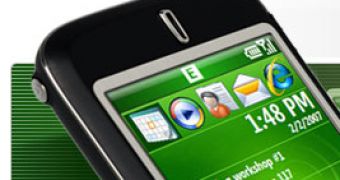At the beginning of this week, Microsoft extended the Windows SideShow technology debuted with the release of Windows Vista to its Windows Mobile operating system. This was possible with the Windows SideShow for Windows Mobile Developer Preview application. Said application is designed to transform PocketPCs and Smartphones powered by Microsoft's Windows Mobile platform into Bluetooth SideShow devices. The release is still in Beta stage and, as such, will come with inherent issues. The Redmond company indicated that the application was tailored for Windows Mobile 5 and 6 phones.
"We've got some favorite uses of it already, including using it to control PowerPoint presentations while viewing the speaker notes, using it as a remote control to Windows Media Player, and viewing RSS feeds on the road. Really, though, we've barely scratched the surface of what's possible here, and developers have the opportunity to invent a whole new range of scenarios using the software and the Managed API SDK that allows Visual Basic and C# development, so we're really excited to see what's going to come out next," explained Toby Muresianu, Windows SideShow Program Manager.
Windows SideShow for Windows Mobile Developer Preview supports integration with the following operating systems: Windows Server 2008; Windows Vista Business; Enterprise; Home Premium and Ultimate. This happens because the SideShow feature is present only in the operating systems enumerated above. With the application, users will be able to send information and content from their computer to their Windows Mobile device, and to use the phone to control their machine.
"This enables you to use your phone as an extra window into your PC. You can both access your computer's information from your Pocket PC or Smartphone, and control the computer through a gadget interface. While the phone is out of range, or when your computer is off, you can continue to view content sent to the phone previously. This makes it easy to send information to the phone that you'll need later on," Microsoft added.

 14 DAY TRIAL //
14 DAY TRIAL //